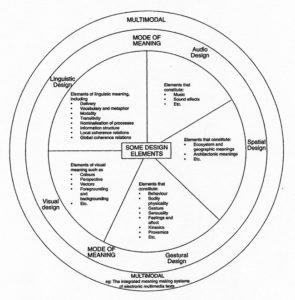These are some random notes from a very exciting presentation on alternative assessments and student driven work. The notes are not a complete account but reflects my own interests and distractions:
Student Makers & Publishers
Amber Lemiere, Instructor of English
Mark Gaither, Instructor of Business Technology
Nicole DiGerlando, Instructor of English & Literature
Lucas Myers, Instructor of Biological Sciences at Lower Columbia College
We got bored accepting assignments, essays, tests, and projects for our eyes only: products of student learning that will eventually be filed away and forgotten about. So did our students! In this presentation, we share how we have started empowering students to become makers and publishers by designing and re-designing course work for a public audience, and using a variety of approaches and tools. Join us, four instructors in a variety of disciplines, to find out more about what our students are making, how we are getting them published, and what our vision is for a campus-wide, cross-discipline publishing culture. Show up with a traditional assignment, and leave with an idea for how you can engage your students by empowering them to make and publish their work, too!
Transitioning from trashcan assignments to something that is meaningful and from their own experience.
The editor of the Salal Review has the students look at other journals from other colleges and ask why it was edited that way.
The students are taught layout and how it presents the art and poetry. There is a technologist that comes in and talks about fonts. They have two workshops: one on Photoshop and the other on InDesign. The webmaster puts up a PDF of the journal.
Nichole teaches a variety of levels of English. In Eng 102 she decided to a class on vampires. The produce a physical journal, 10-12 page research paper, and they are gathered up. She also has students produce a zine. She uses Prezi as well for the students to put up presentations.
Mark uses “self-organized learning environments.” The students are teaching themselves. SOLE Reviewer Student (Mitra, 2013). He had the girls make a “cookbook.” The entire class is working as a 40 person team producing one product. They used Word, layout, images. The students raised the money for producing the cookbook. The students are teaching themselves. “As an instructor, I didn’t have to do anything.” He just stayed out of it. He also worked with other instructors to have the students work across disciplines. The students are using Lulu for publishing. They sell the books for $40 a piece. They raised the money from a bake sale and a pie in the face contest. SOLE is a community process – it is self-policing.
This is based on the work of Sugata Mitra https://www.theschoolinthecloud.org/
Amber wants to create assignments that are empowering via multimedia. Multimodal Texts: Linguistic, Audio, Visual, Gestural, and Spatial
New London Group was cited. She initially asked students to create a mutimodal object for an extra 10 points. She then asked the students to make websites using all five elements of design. The students are using blogs and commenting on one another’s blog.
In response to the idea that writing connects writers to the ecosystem of ideas. “Digital spaces are places.”
Lucas talked about Pedagogical Transformation. Students are 1.5x more likely to fail in a traditional lecture oriented class than courses with a focus on active learning. (Freeman, 2014). Science is taught as if it is a body of facts and not a process of knowing. He had the students build websites. They needed to take what they are learning and put it up as a multimodal object. Some had family members use the material to help them through high school science. Students are designing their own experiments. They are not using the cookbook labs but creating, writing, posters, peer-reviewed, and published.
In one assignment, the students have to design a cancer-proof cell. They create videos for their websites.
Students are creating peer-reviewed undergrad research journals, epublications, and mobile apps.





